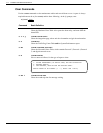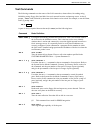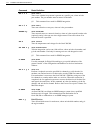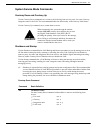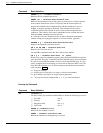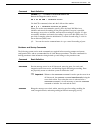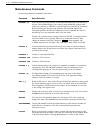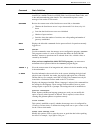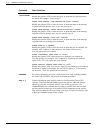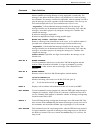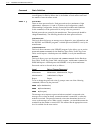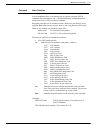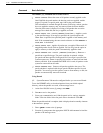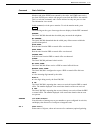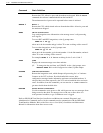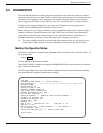
6-12 Installation and Maintenance Volume
Octel 200/300 S.4.1 PB60019−01
Command Basic Definition
LANG
(continued)
SPEAK DAY BEFORE MONTH
Modify this option to YES to cause the server to speak the day before speaking
the month. For example, “Fifth of April.”
SPEAK NAME BEFORE “ONE MESSAGE WAITING” PHRASE
Modify this option to YES to cause the server to speak the name of the message
recipient before the prompt “there is one new message for ...”
SPEAK NAME BEFORE “MULTI MESSAGE WAITING” PHRASE
Modify this option to YES to cause the server to speak the name of the message
recipient before the prompt “there are two new messages for ...”
SPEAK NAME BEFORE “CALL FOR” PHRASE
Modify this option to YES to cause the server to speak the name of the message
recipient before an incoming call is announced.
SPEAK YEAR AS A NUMBER
Modify this option to YES to cause the server to speak the year as a number. For
example, 1997 is spoken as “One thousand, nine hundred, ninety seven.”
S3.0, this option has been removed.
SPEAK “THOUSAND” WHEN YEAR IS 1XXX
Modify this option to YES causes the server to speak the year without the
first-digit quantity. For example, 1997 is spoken as “Thousand, nine hundred,
ninety seven.” S3.0, this option has been removed.
SPEAK SPECIAL PHRASE WHEN YEAR IS X100
Modify this option to YES if the last two digits for years ending in even hundreds
should not be spoken. For example, the year 2100 is spoken as “Two thousand,
one hundred.” (S3.0, this option has been removed.)
LANSTAT Gives basic information about the current status of the LAN, including whether
the LAN is UP or DOWN, and the state of the high-speed links.
LOG x y Collects information about specific events for Call Processing Trace (CPT)
activities, Call Detail Record (CDR) log activities, Moves, Adds and Changes
(MAC) log activities and Server Activity Trace (SAT) log activities. This
command displays the collected data according to specific filters that can limit
the time interval and the type of log defined. In this command, x is the specific
filter for data collected in the logs, and y is the log to be traced. For details, refer
to the Log Commands chapter in this volume.



